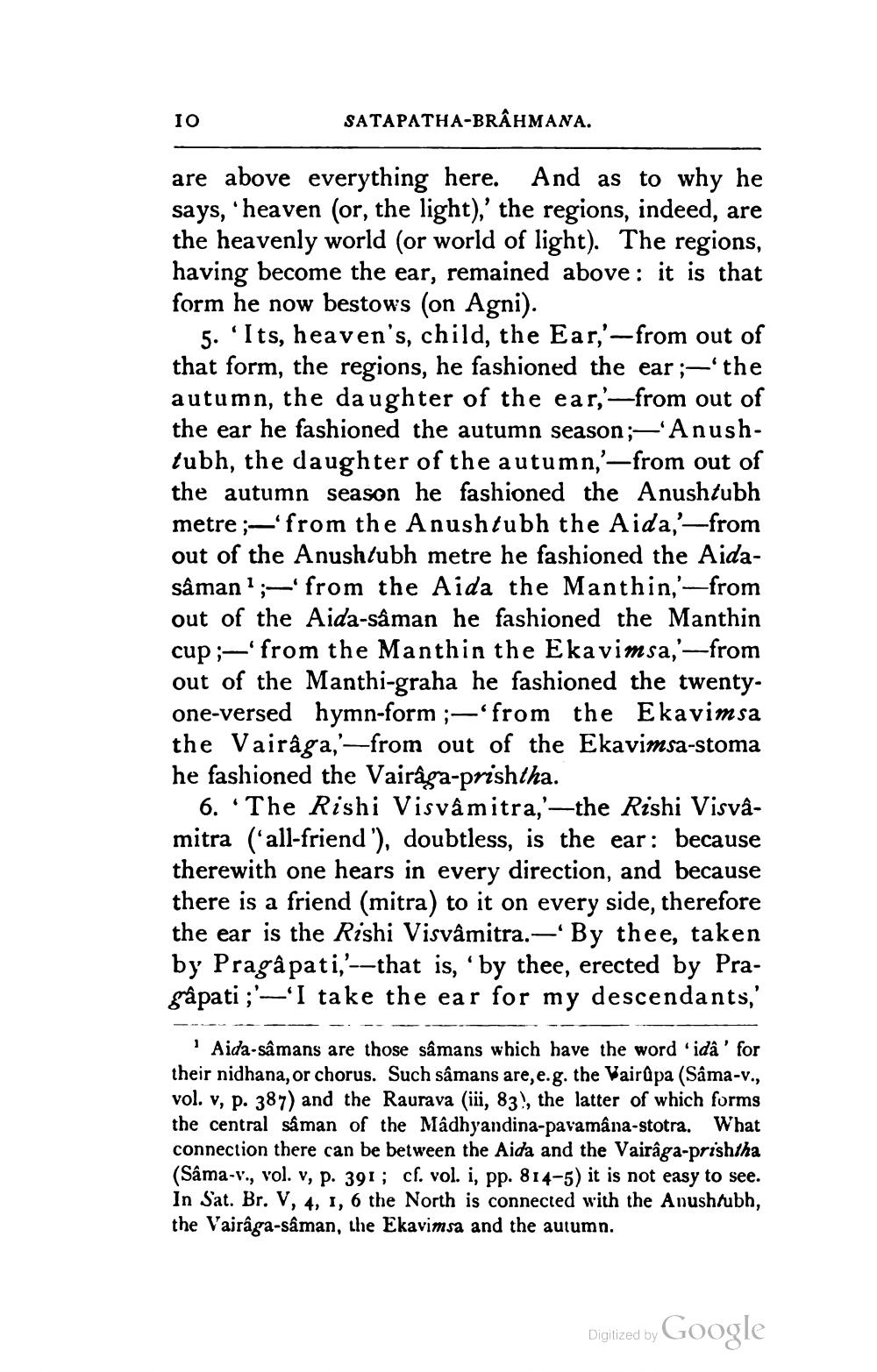________________
10
SATAPATHA-BRAHMANA.
are above everything here. And as to why he says, 'heaven (or, the light),' the regions, indeed, are the heavenly world (or world of light). The regions, having become the ear, remained above: it is that form he now bestows (on Agni).
5. 'Its, heaven's, child, the Ear,'--from out of that form, the regions, he fashioned the ear ;—'the autumn, the daughter of the ear,'-—from out of the ear he fashioned the autumn season ;-'Anushtubh, the daughter of the autumn,'—from out of the autumn season he fashioned the Anushtubh metre;'from the Anushtubh the Aida,'-from out of the Anushtubh metre he fashioned the Aidasâman';-' from the Aida the Manthin,'--from out of the Aida-sâman he fashioned the Manthin cup ;-'from the Manthin the Ekavimsa,'—from out of the Manthi-graha he fashioned the twentyone-versed hymn-form ;– from the Ekavimsa the Vairaga,'—from out of the Ekavimsa-stoma he fashioned the Vairaga-prishtha.
6. “The Rishi Visvâmitra,'—the Rishi Visvamitra (all-friend'), doubtless, is the ear: because therewith one hears in every direction, and because there is a friend (mitra) to it on every side, therefore the ear is the Rishi Visvâmitra.—' By thee, taken by Pragâ pati,'--that is, 'by thee, erected by Pragrâpati ;'-—'I take the ear for my descendants,'
Aida-sâmans are those samans which have the word 'ida' for their nidhana, or chorus. Such sâmans are, e.g. the Vairûpa (Sâma-v., vol. v, p. 387) and the Raurava (iü, 83!, the latter of which forms the central såman of the Madhyandina-pavamâna-stotra. What connection there can be between the Aida and the Vairaga-prishtha (Sâma-v., vol. v, p. 391; cf. vol. I, pp. 814-5) it is not easy to see. In Sat. Br. V, 4, 1, 6 the North is connected with the Anushrubh, the Vairaga-saman, the Ekavimsa and the autumn.
Digilized by Google




